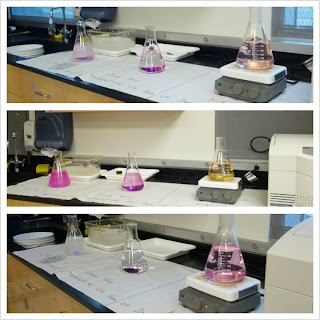Montgomery College: BI107 and BI107L
I enrolled in a local community college course (Biology I, BI107 and BI107L) this summer at Montgomery College (MC). It was 3-4 hours per night for 4 nights per week for 5-6 weeks. I enjoy biology very much. I spent most of my time in July-August reading my biology textbook and studying for class. I passed the class and will continue my biology studies in BI108 this fall!
Why Biology I? Many people know that I received my B.S. in General Science from the United States Naval Academy. I took a biology class back then, and I wanted to take Biology II now, but Montgomery College said my credit was not sufficient and that I would have to take Biology I at MC. It would cost me another $593+, but I was fine with that.
Did I learn much? YES! I learned so much! I think it is easier to go back to school once you've gone to school, gone into the workforce, and are going back to school. I also had great professors. I know a few students who are stubborn to having teachers with accents of any sort, but, hey, that's the reality of the world today--you will have to work with people who have different backgrounds and will probably have foreign accents. Both of my professors had thick accents, but it was no problem for me to understand them. They both taught the material well, answered questions, and set us up for success. On our part, we just had to read the material, take notes, and do online quizzes (there were even opportunities for extra credit!). The book we had for the class was excellent (very easy to comprehend the topics), the online resources (practice quizzes and notes) were helpful, and the tests were legit (challenging but not unreasonable for a college course).
Lecture was intense (exam every week), as were the labs (2+ labs every week), but that was understandable. After all, we were trying to cover a semester in a few weeks! Summer school is easier if you don't have a full-time job (and not training for anything either), but I survived!
Here are some of the labs we covered and a quick take-away from each lab.
Why Biology I? Many people know that I received my B.S. in General Science from the United States Naval Academy. I took a biology class back then, and I wanted to take Biology II now, but Montgomery College said my credit was not sufficient and that I would have to take Biology I at MC. It would cost me another $593+, but I was fine with that.
Did I learn much? YES! I learned so much! I think it is easier to go back to school once you've gone to school, gone into the workforce, and are going back to school. I also had great professors. I know a few students who are stubborn to having teachers with accents of any sort, but, hey, that's the reality of the world today--you will have to work with people who have different backgrounds and will probably have foreign accents. Both of my professors had thick accents, but it was no problem for me to understand them. They both taught the material well, answered questions, and set us up for success. On our part, we just had to read the material, take notes, and do online quizzes (there were even opportunities for extra credit!). The book we had for the class was excellent (very easy to comprehend the topics), the online resources (practice quizzes and notes) were helpful, and the tests were legit (challenging but not unreasonable for a college course).
Lecture was intense (exam every week), as were the labs (2+ labs every week), but that was understandable. After all, we were trying to cover a semester in a few weeks! Summer school is easier if you don't have a full-time job (and not training for anything either), but I survived!
Here are some of the labs we covered and a quick take-away from each lab.
Osmosis and Diffusion: heat increases the rate of diffusion.
Enzymes: enzymes have ideal working temperatures.
Cellular respiration: we learned how to calculate the rate of respiration for crickets and germinating peas.
Microscopes: learned how to use a microscope.
Photosynthesis: we learned how amount of sunlight can affect the rate of photosynthesis using different light bulbs.
Chromatography: chlorophyll types and pigments.
DNA Purification and Gel Electrophoresis: we learned how to read DNA ladders and how certain plasmid DNA are cut by certain enzymes.
Transformation of Plasmid DNA into E. Coli: Awesome lab!
Transformation of Plasmid DNA into E. Coli: Results...
Microscopes on plant cells...
Microscopes on animal cells...












Comments
Post a Comment